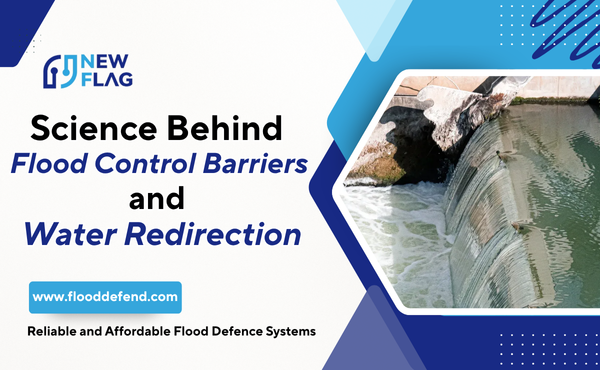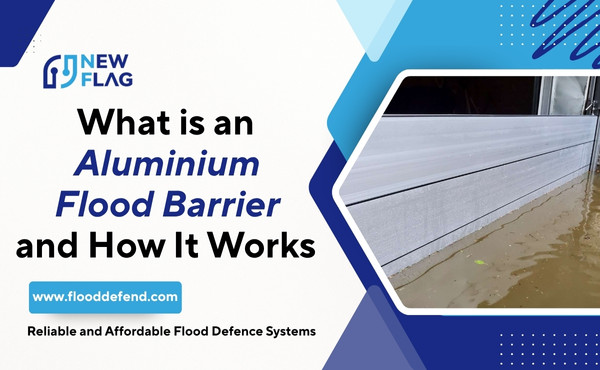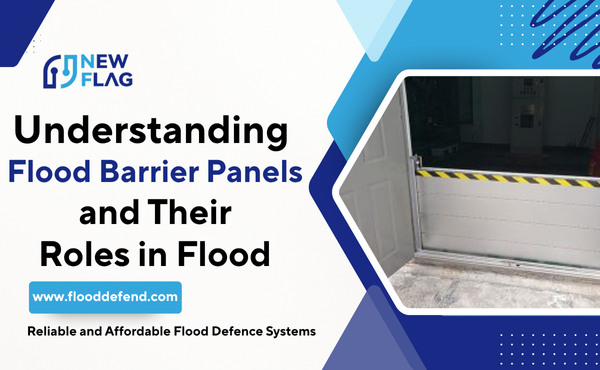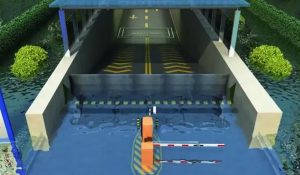
Imagine water rising quickly outside your home. You watch as streets turn into rivers and worry about damage. Flood control barriers stand between you and the threat. These structures stop water from entering buildings or roads. You see levees, dikes, and movable walls in action during emergencies. Understanding how these barriers work helps you make smart choices for protection.
How Flood Control Barriers Work
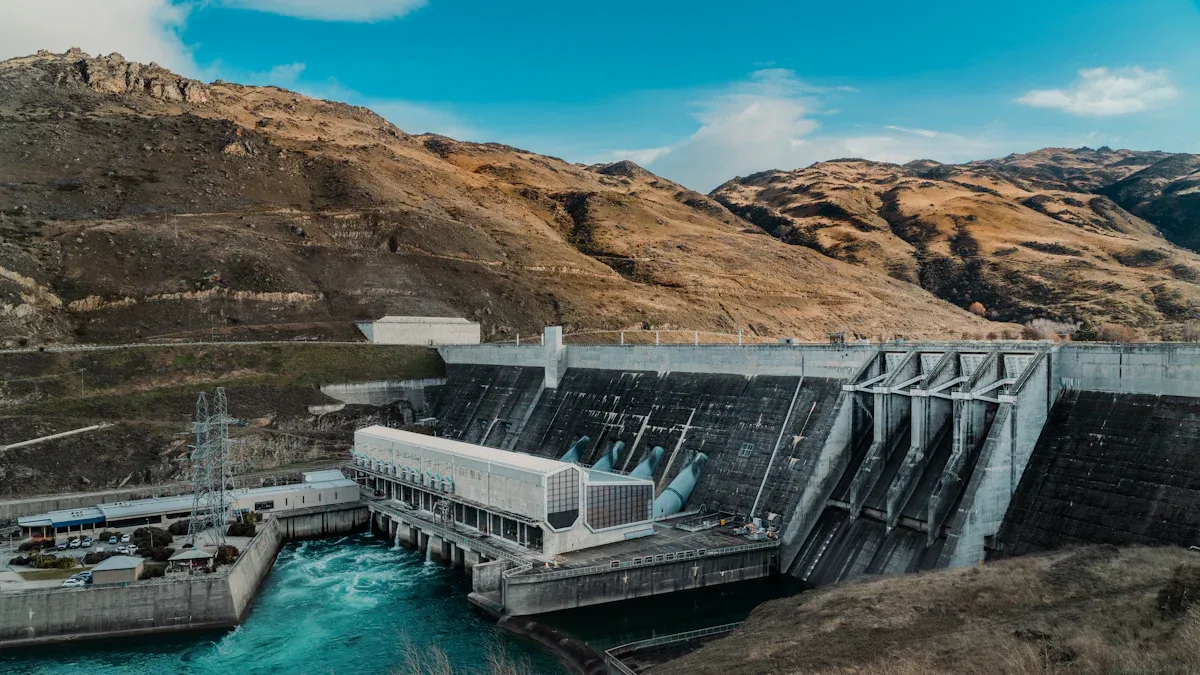
Redirecting and Containing Water
Flood control barriers help you manage water during floods. These structures change the direction of water flow or hold water back. You see them along rivers, coastlines, and city streets. When water rises, barriers guide it away from homes and important buildings.
You can think of flood control barriers as tools that shape water movement. Some barriers push water toward safe areas. Others trap water in reservoirs or behind walls. You use these systems to protect roads, bridges, and farmland.
Here are ways flood control barriers redirect and contain water:
- Levees and dikes: You build these long walls beside rivers. They keep water from spilling into neighborhoods.
- Dams: You use dams to block rivers and create lakes. Dams store water and release it slowly.
- Temporary barriers: You set up sandbags or inflatable walls during emergencies. These barriers stop water from reaching buildings.
Creating Protective Boundaries
Flood control barriers create strong boundaries between water and dry land. You rely on these boundaries to keep your property safe. When you install barriers, you form a shield that blocks water from entering homes, schools, and businesses.
You see different designs for protective boundaries. Some barriers stand tall and permanent. Others move into place when water rises. You choose the right type based on your location and risk level.
| Barrier Type | How It Protects You | Where You Use It |
|---|---|---|
| Levee | Forms a wall along rivers | Rural and urban areas |
| Dike | Blocks water from low-lying land | Coastal regions |
| Movable wall | Rises when water approaches | City streets, buildings |
| Sandbag barrier | Creates a quick boundary | Homes, businesses |
You need to check barriers for damage after each flood. Regular inspections help you keep boundaries strong and reliable.
Science Behind Water Redirection
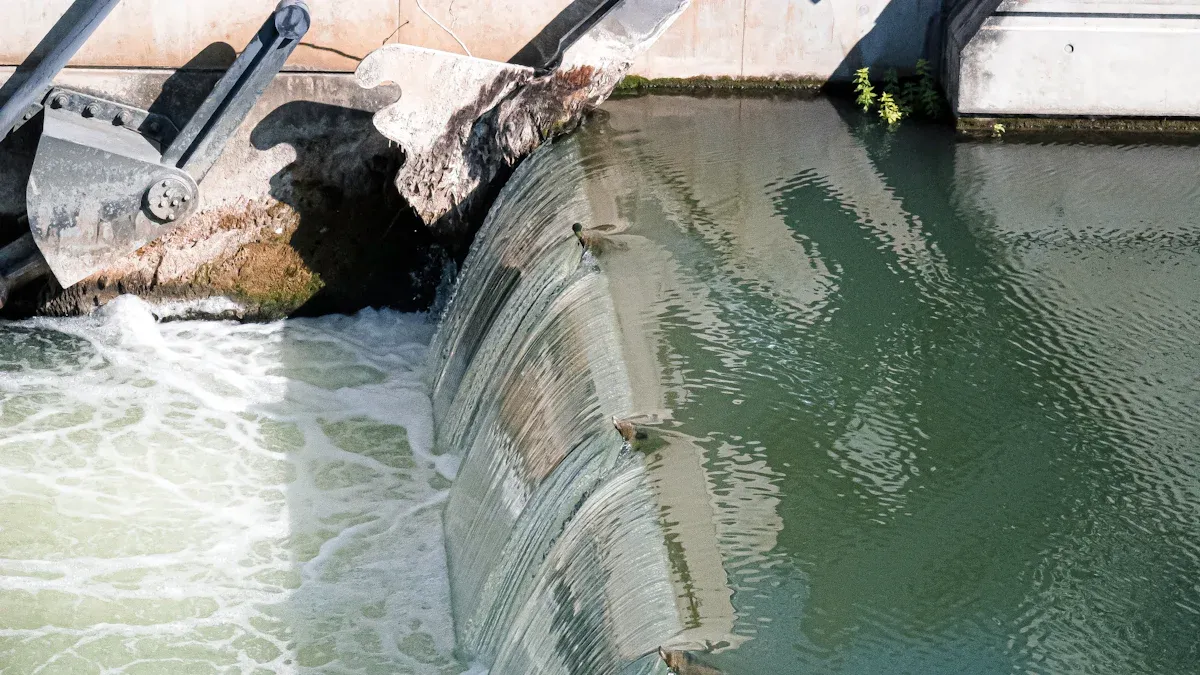
Hydrostatic Pressure Explained
You face a powerful force when water rises during a flood. This force is called hydrostatic pressure. It pushes against anything in its path, including flood control barriers.
Hydrostatic pressure increases as water gets deeper. You notice that the bottom of a barrier feels more pressure than the top. This happens because water weight builds up with depth.
You can use a simple formula to understand hydrostatic pressure:
Pressure = Density × Gravity × Depth
You see that deeper water creates more pressure. If you build a barrier, you must make sure it can handle this force. You need to check the height and strength of your barrier. If you ignore hydrostatic pressure, water can break through and cause damage.
Tip: You should always consider water depth when choosing flood control barriers for your property.
Barrier Design Principles
You want flood control barriers that stand strong against water. Good design helps you protect your home and community. You must think about several factors when you plan a barrier.
Here are key principles you should follow:
- Height and thickness: You need a barrier tall enough to block rising water. Thick walls resist pressure better.
- Material strength: You choose materials like concrete, steel, or packed earth. Strong materials last longer and hold back water.
- Foundation stability: You build barriers on solid ground. Weak foundations can cause barriers to fail.
- Shape and slope: You design barriers with sloped sides. Slopes help spread out pressure and prevent collapse.
| Principle | Why It Matters |
|---|---|
| Height | Stops water from overtopping |
| Thickness | Resists strong water pressure |
| Material strength | Prevents cracks and leaks |
| Foundation stability | Keeps barrier in place |
| Shape and slope | Reduces risk of failure |
You should inspect your flood control barriers often. Regular checks help you spot weak spots and fix them before the next flood.
Note: You can improve protection by combining strong design with regular maintenance.
Types of Flood Control Barriers
Flood control barriers come in many forms. You can choose the best type for your area by learning how each one works. These barriers help you manage water and protect your property during floods.
Permanent Barriers
Permanent barriers stay in place all year. You see them along rivers, lakes, and coastlines. Levees and dikes are common examples. You build levees with earth, concrete, or stone. They form a strong wall that keeps water away from homes and roads. Dikes work in a similar way. You use them to block water from low-lying land, especially near the sea.
Dams are another type of permanent barrier. You use dams to hold back river water and create reservoirs. Dams help you control water flow and prevent sudden flooding.
| Barrier Type | Main Material | Common Location | Function |
|---|---|---|---|
| Levee | Earth/Concrete | Rivers | Holds water back |
| Dike | Earth/Stone | Coastlines | Blocks water from land |
| Dam | Concrete/Earth | Rivers | Stores and releases water |
Tip: You should inspect permanent barriers often. Regular checks help you find weak spots before a flood happens.
Temporary and Movable Barriers
Temporary barriers give you quick protection when floods threaten. You use sandbags, water-filled tubes, or portable walls. You set up these barriers before water reaches your property. Movable barriers work in busy cities and areas with changing flood risks. You can raise or lower these walls as needed. They help you protect streets, buildings, and bridges during emergencies.
- Sandbags: You stack them to block water from doors and windows.
- Inflatable tubes: You fill them with water to create a sturdy wall.
- Movable flood walls: You deploy them when water levels rise.
Note: You should store temporary barriers in a safe place. Quick access helps you respond faster during a flood.
Automatic and Passive Systems
Automatic and passive systems work without much effort from you. These flood control barriers activate when water reaches a certain level. You see automatic barriers rise from the ground when sensors detect flooding. Passive systems use gravity or water pressure to move into place. You find these systems in modern cities and near important buildings.
- Automatic barriers: Sensors trigger them to lift and block water.
- Passive barriers: Water pressure pushes them up to form a wall.
You benefit from these systems because they save time and reduce manual labor. You can combine automatic and passive barriers with other types for stronger protection.
Tip: You should learn how each system works. Understanding your options helps you choose the best flood control barriers for your needs.
Real-World Effectiveness
Case Studies
You can see the impact of flood control barriers in many places around the world. In the Netherlands, you find dikes and levees protecting cities and farmland from the sea. These barriers have stopped major floods and saved thousands of homes. In the United States, you notice levees along the Mississippi River. They help you keep water away from towns during heavy rain. Movable flood walls in urban areas have protected streets and subway systems during sudden storms.
Here are some examples of flood control barriers in action:
- Dikes in coastal regions shield communities from storm surges.
- Levees along rivers prevent water from flooding neighborhoods.
- Temporary sandbag walls help you protect homes during emergencies.
- Automatic barriers in cities rise when sensors detect rising water.
Note: You can learn from these examples and choose the best solution for your area.
Factors for Success
You need to consider several factors to make flood control barriers work well. The design and placement of each barrier matter. You must check the height and strength to match the risk in your area.
Regular maintenance keeps barriers strong and ready for the next flood. You should train people to set up temporary barriers quickly. Local weather patterns and soil conditions also affect how well barriers perform.
| Factor | Why It Matters |
|---|---|
| Barrier design | Matches flood risk |
| Maintenance | Prevents failure |
| Community training | Speeds up response |
| Local environment | Influences barrier choice |
You improve your protection by combining different types of barriers. You also need to update your flood plan as risks change over time.
Tip: You should review your flood control strategy every year to stay prepared.
Choosing Flood Control Barriers
Assessing Needs
You need to choose the right flood control barriers for your property. Start by looking at your location. Check if you live near rivers, lakes, or in low-lying areas. Review past flood events in your community. Measure the size of the area you want to protect. You should also think about how quickly water can rise during storms.
Make a list of your risks. Decide if you need permanent barriers or temporary solutions. Permanent barriers work well for places with frequent flooding. Temporary barriers help you respond to sudden threats. You can talk to local experts or use online maps to learn about flood zones.
| Step | What You Should Do |
|---|---|
| Check location | Find out if you are in a flood zone |
| Review history | Look at past flood events |
| Measure area | Decide how much space to protect |
| Assess risk | Choose barrier type |
Tip: You can combine different types of barriers for stronger protection.
Conclusion
You learned how flood control barriers use science to protect your property. These systems rely on strong materials, smart design, and regular care. You can assess your flood risk by checking your location and past events. Choose solutions that fit your needs.
- Inspect barriers often
- Train others to help



